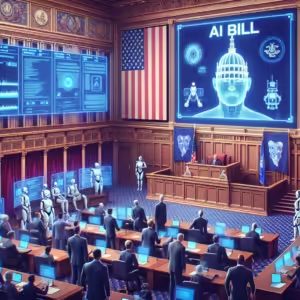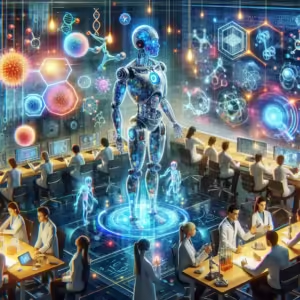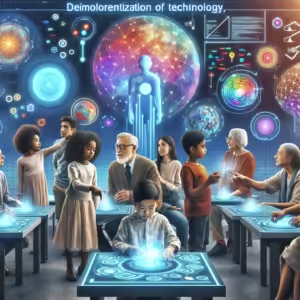Understanding the Looming Energy Crisis for AI Supercomputers
The rapid growth of artificial intelligence (AI) has undeniably transformed numerous industries, and at the heart of this technological evolution lie AI supercomputers. These powerful machines process vast amounts of data, enabling breakthroughs in machine learning, autonomous systems, and data analytics. However, as we charge towards even more advanced AI capabilities, a significant challenge appears on the horizon: the potential for power constraints by 2030.
The Growing Energy Appetite of AI Supercomputers
AI supercomputers are designed to manage and process massive datasets at remarkable speeds. This extraordinary computational power requires a substantial amount of energy. To harness their full potential, these machines rely on thousands of processing units working in tandem, often consuming megawatts of power.
Key Factors Contributing to Increased Power Demands:
- Expanded Data Processing Needs: As industries increasingly leverage AI technologies, the volume of data needing to be processed grows exponentially.
- Advanced Algorithms: Modern AI algorithms require more computational resources, demanding more power from supercomputers.
- Efficiency Limitations: Although there have been improvements in energy efficiency, the advances in AI capabilities outpace these gains, leading to greater power requirements.
Future Projections: Power Constraints by 2030
Researchers predict that if we continue on the current trajectory without significant technological advancements or strategic interventions, power consumption for AI could become unsustainable by 2030. This projection raises concerns among technology developers, policymakers, and environmentalists alike.
Potential Challenges Ahead
Strain on Power Grids: The escalating energy demands could result in a strain on existing power infrastructure. This challenge would necessitate upgrades to current systems or the development of more resilient power grids capable of handling increased loads.
Environmental Impact: Increased energy use directly affects the environment, with greater reliance on fossil fuels leading to higher carbon emissions. An environmentally sustainable approach would require a significant shift towards renewable energy sources.
Rising Operational Costs: Powering AI supercomputers could become a financial burden for many organizations. As operational costs rise, it may limit the accessibility of AI technologies, widening the gap between tech giants and smaller companies or startups.
Innovative Solutions on the Horizon
Despite the daunting challenges, potential solutions are emerging to address the impending power constraints. Continuous innovation and strategic planning could pave the way for sustainable AI development.
Renewable Energy Integration
Solar and Wind Power: Transitioning AI facilities to renewable energy sources like solar and wind could significantly reduce reliance on non-renewable energy and decrease the carbon footprint of AI activities. This approach not only offers a sustainable solution but also aligns with global efforts to mitigate climate change.
Energy Storage Technologies: Advancements in battery storage technologies offer another avenue. By efficiently storing energy generated from renewable sources, AI supercomputers can maintain optimal operation even when direct energy production is inconsistent.
Enhancing Energy Efficiency
Optimized Hardware Architectures: Developing more energy-efficient semiconductor technologies and hardware architectures can lower energy consumption per unit of computation. Companies are increasingly investing in custom silicon and AI accelerators tailored for specific tasks.
Intelligent Resource Management: Implementing AI-powered resource management systems enables dynamic allocation of computing resources, ensuring machines use power judiciously and efficiently, thereby reducing waste.
Policy and Industry Collaboration
Setting Standards: Establishing energy efficiency standards and benchmarks for AI operations can drive the industry towards more sustainable practices. These standards should be developed collaboratively between tech companies, governments, and international organizations.
Cross-Sector Collaboration: Public and private sector collaborations are critical in addressing these power challenges. Joint ventures between technology firms and energy companies, alongside supportive policy interventions, can accelerate the transition to more sustainable AI ecosystems.
Preparing for the Future
While the projected power constraints for AI supercomputers by 2030 present formidable challenges, they also offer opportunities for innovation and collaboration. The onus lies on today’s leaders and innovators to create AI systems that not only push the boundaries of technology but also address the social, economic, and environmental impacts associated with their development.
Taking Proactive Steps
– Invest in Research: Further research into AI hardware efficiency and sustainable computing methodologies is essential.
– Advance Energy Solutions: Support the development and adoption of clean energy technologies across AI operations.
– Encourage Global Cooperation: AI’s power concerns are a global issue requiring coordinated efforts across nations.
By considering these actions, we can work towards an AI-powered future that balances innovation with sustainability, ensuring the benefits of AI are accessible, equitable, and environmentally conscious.








